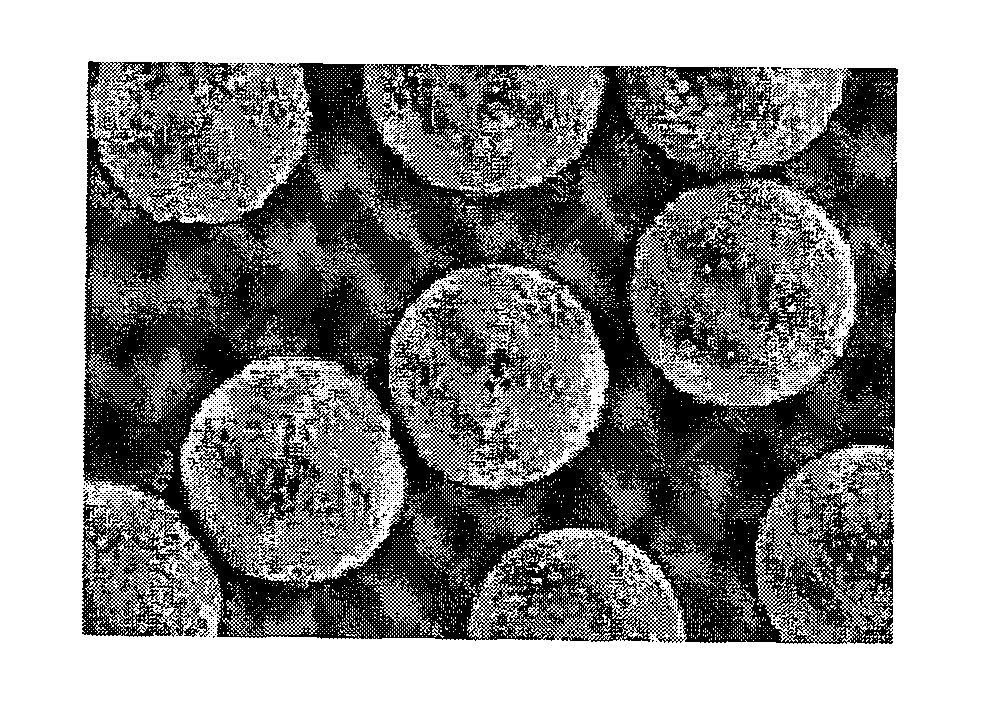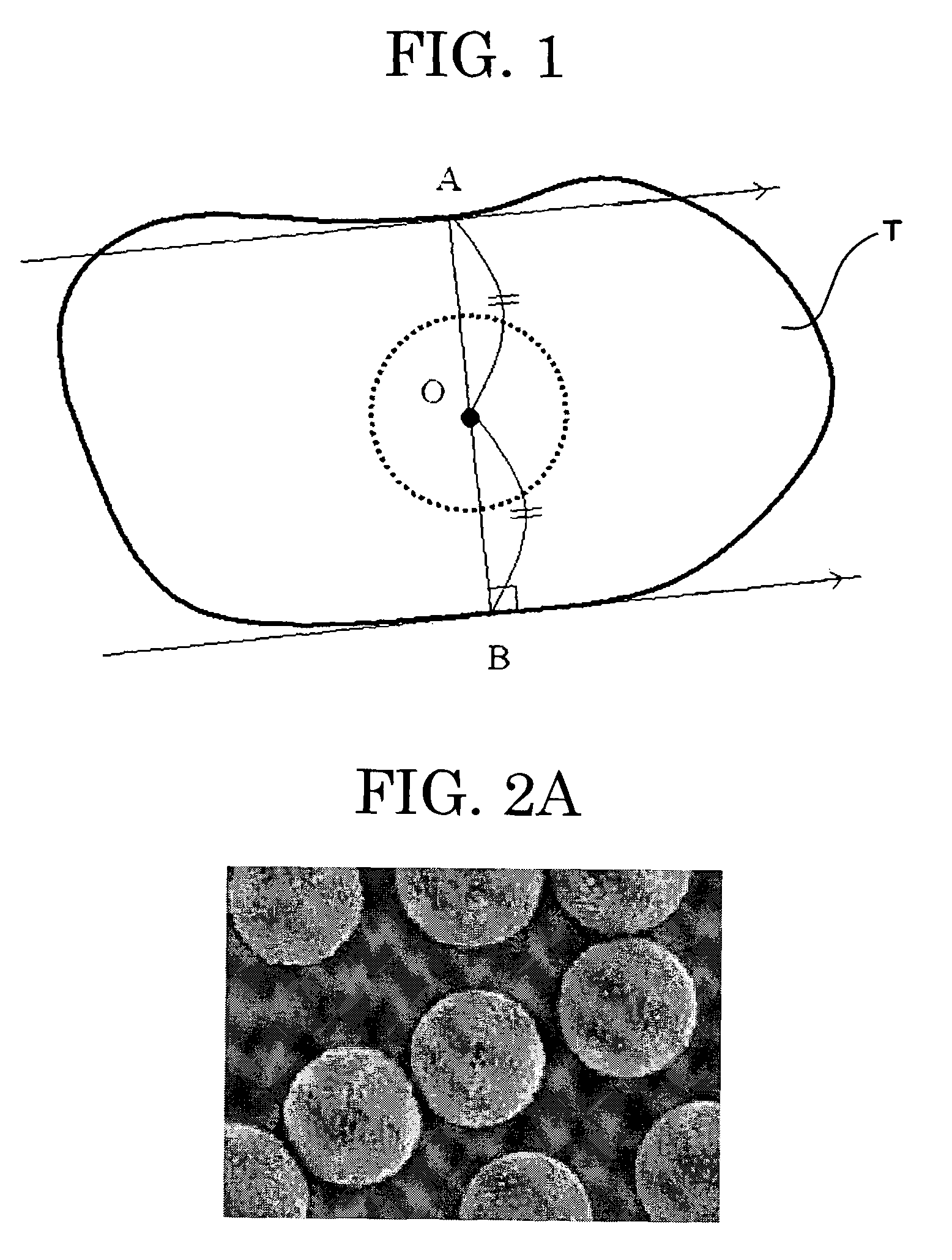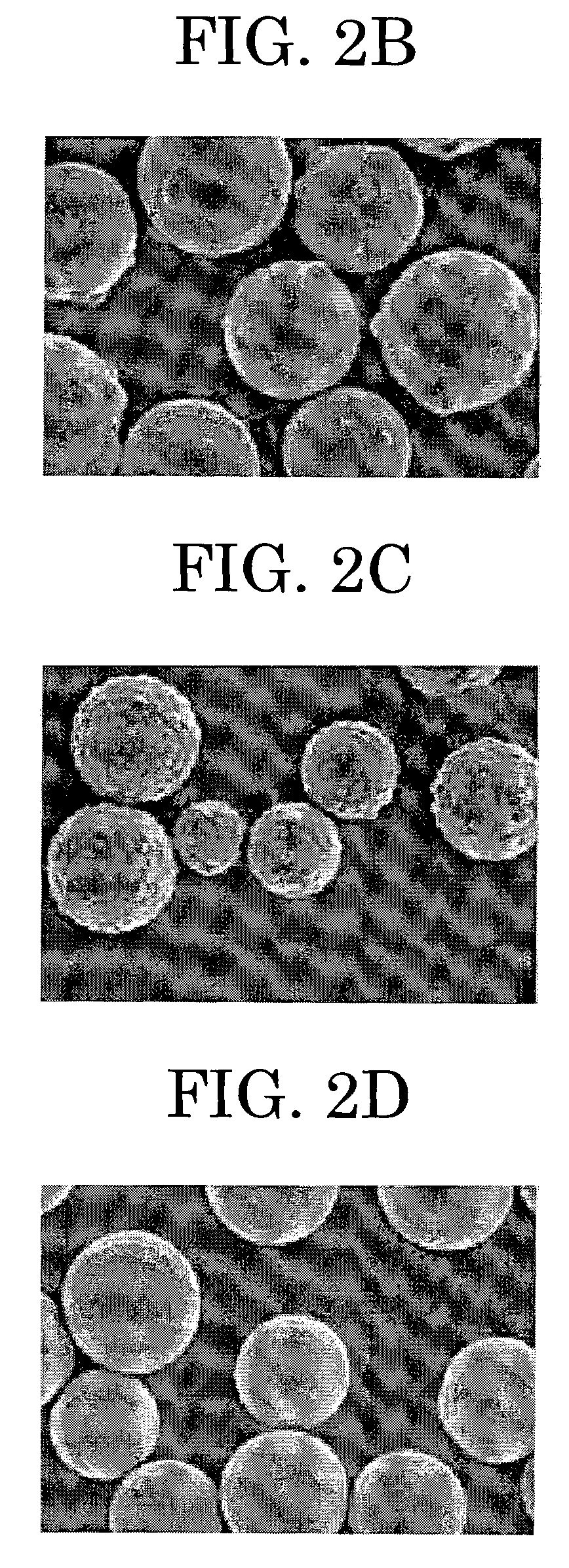Electrostatic image developing toner, image forming apparatus, image forming method, and process cartridge
a technology of developing toner and electrostatic image, which is applied in the direction of electrographic process apparatus, developers, instruments, etc., can solve the problems of filming and a drop in transfer efficiency, cleaning failure, and background smear, and achieve stable formation of image, less background smear, and high reproducibility
- Summary
- Abstract
- Description
- Claims
- Application Information
AI Technical Summary
Benefits of technology
Problems solved by technology
Method used
Image
Examples
example 1
Preparation Step of Oil Phase
[0282]A container to which a stirring rod and a thermometer had been set was charged with [polyester 1] (545 parts by mass), [paraffin wax (melting point: 74° C.)] (181 parts by mass) and ethyl acetate (1,450 parts by mass). The mixture was increased in temperature to 80° C. under stirring, maintained at 80° C. for 5 hours, and cooled to 30° C. for 1 hour. Then, the container was charged with [masterbatch 1] (500 parts by mass) and ethyl acetate (100 parts by mass), followed by mixing for 1 hour, to thereby obtain [raw material solution 1].
[0283][Raw material solution 1] (1,500 parts by mass) was placed in a container, where the pigment and the wax were dispersed with a bead mill (“ULTRA VISCOMILL,” product of AIMEX CO., Ltd.) under the following conditions: a liquid feed rate of 1 kg / hr, disc circumferential velocity of 6 m / s, 0.5 mm-zirconia beads packed to 80% by volume, and 3 passes. Next, a 66% by mass ethyl acetate solution of [polyester 2] (655 pa...
example 2
[0293][Toner 2] was obtained in the same manner as in Example 1, except that after beating aggregated [toner base particle 1] using HENSHEL MIXER, to [toner base particle 1] (100 parts by mass), commercially available silica fine powder H20™ (1.5 parts by mass) (product of Clariant (Japan) K.K.; average primary particle diameter: 12 nm, without silicone oil treatment), RY50 (2.8 parts by mass) (product of Nippon Aerosil Co., Ltd.; average primary particle diameter: 40 nm, with silicone oil treatment), and MSP-009 (0.8 parts by mass) (product of Tayca Corporation, average primary particle diameter: 80 nm, with silicone oil treatment) were added and mixed together using HENSCHEL MIXER, and the resultant mixture was caused to pass through a sieve with an opening size of 60 μm to remove coarse particles and aggregates.
example 3
[0294][Toner 3] was obtained in the same manner as in Example 1, except that after beating aggregated [toner base particle 1] using HENSHEL MIXER, to [toner base particle 1] (100 parts by mass), commercially available silica fine powder NY50 (1.5 parts by mass) (product of Nippon Aerosil Co., Ltd.; average primary particle diameter: 30 nm, with silicone oil treatment) was added and mixed together using HENSCHEL MIXER, and the resultant mixture was caused to pass through a sieve with an opening size of 60 μm to remove coarse particles and aggregates.
PUM
| Property | Measurement | Unit |
|---|---|---|
| lengths | aaaaa | aaaaa |
| lengths | aaaaa | aaaaa |
| diameter | aaaaa | aaaaa |
Abstract
Description
Claims
Application Information
 Login to View More
Login to View More - R&D
- Intellectual Property
- Life Sciences
- Materials
- Tech Scout
- Unparalleled Data Quality
- Higher Quality Content
- 60% Fewer Hallucinations
Browse by: Latest US Patents, China's latest patents, Technical Efficacy Thesaurus, Application Domain, Technology Topic, Popular Technical Reports.
© 2025 PatSnap. All rights reserved.Legal|Privacy policy|Modern Slavery Act Transparency Statement|Sitemap|About US| Contact US: help@patsnap.com



